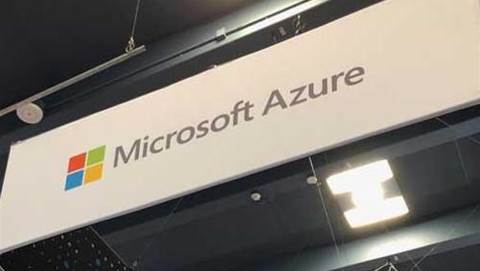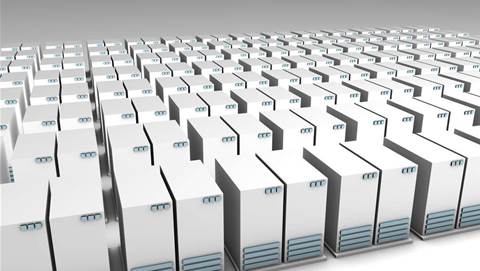The data storage industry has anticipated a sea change since the introduction of flash-based Solid State Drives (SSD) in the mid-1990s.

While there seems to be no doubt among vendors and analysts that SSDs give enterprise datacentres a necessary performance boost, hefty price tags have kept buyers at bay.
Gartner estimates that in 2008, only 843,000 enterprise-grade SSDs were shipped, compared with 45.9 million enterprise-grade Hard Disk Drives (HDDs).
One gigabyte of SSD storage costs about US$2, which is more than 20 times the cost of the same amount of HDD storage, according to Gartner analyst Joseph Unsworth.
"Right now, the enterprise-grade SSD market is still in its infancy," Unsworth told iTnews.
"How long until the potential is realised? I think it's going to be the 2011 and beyond timeframe, the reason being we've got to get prices down, and user understanding up," he said.
At Gartner's Data Centre Conference in December 2008, 60 per cent of attendees revealed plans to deploy enterprise-grade SSDs during the next three years.
Of all the SSD categories -- for example, netbooks, notebooks and PCs -- enterprise-grade SSDs are said to present the most compelling value proposition. Compared to HDDs, SSDs require far less power to run. They produce very little heat, and thus require less cooling and datacentre space.
Since SSDs comprise no moving parts, they are unlikely to experience mechanical failure. They also are able to achieve more bandwidth and input/output operations per second (IOPS) than HDDs.
Gartner estimates that compared to a rack of 120 HDDs, a rack of 120 SSDs would deliver 115 times more read IOPS (Input/Output Operations Per Second) and three times more bandwidth, while consuming five times less energy.
Adversely, the SSD setup is estimated to cost at least 25 times more per gigabyte. Gartner expects the price difference to remain at a 10 to 20 times premium to 2012 and beyond.
A hybrid future
Unsworth said future enterprise storage arrays will combine SSD and HDD, with HDD providing a bulk of the storage capacity and SSD acting as a high-performance, 'Tier Zero' level of storage for data that is frequently accessed.
Rather than challenging the HDD market, SSD could drive a demand for more bulk storage by enabling faster data processing, he said.
BS Teh, Asia Pacific Sales and Marketing VP and Managing Director of HDD manufacturer Seagate, agreed.
While Seagate currently has no SSD offerings, Teh said plans to deliver enterprise SSD products are underway.
"Seagate believes SSD and HDD will co-exist over the long-term and we will have both solutions in our portfolio," he told iTnews.
"The deployment of SSDs will likely spur additional growth in HDD and increase the overall demand for storage used in new applications and devices."
Storage vendor EMC recommends that as a rule of thumb, flash-based SSD should comprise four to five percent of an enterprise's total storage capacity.
EMC has included SSDs in its Symmetrix enterprise storage array since January 2008. In mid-2008, it also added SSD to its midrange storage array, Clariion.
While SSD sales started slowly, they increased exponentially, according to Joel Schwartz, Senior VP and General Manager of EMC's Common Storage Platform Operations.
"We were the only storage vendor shipping SSD all last year," Schwartz told iTnews. "The last two quarters, we've run out of product."
"We fully believe that this is the most disruptive technology to come along in the storage business since the first storage array," he said.
Sun Microsystems' ANZ Storage Product Marketing Manager, Steve Stavridis, told iTnews that in Australia, the demand for SSD is driven by businesses with high transaction processing requirements, such as those in the financial industry.
In March, Sun targeted the enterprise with new flash-powered designs for its x64 and chip multi-threaded (CMT) servers.
The company also offers SSD storage network accelerators in the 7210 and 7410 Unified Storage Systems, part of Sun's Open Storage range.
Designed for supercomputing applications, Sun's Open Storage products will be implemented at the Australian National University and Bureau of Meteorology as part of a $30 million, four-year deal that was announced earlier this year.
When will SSD prices fall? Read on to page two.
There remains some confusion in the industry about SSDs, with vendors and analysts sending mixed messages about how low SSD prices will fall.
Last year, EMC estimated that the cost per gigabyte of enterprise SSDs would be on par with high-performance Fibre Channel HDDs by 2011. This year, it reported a 75 per cent decrease in the prices of its SSD products, attributing the decrease to a lower underlying cost of the technology.
Meanwhile, Samsung Semiconductor's flash marketing manager Brian Beard told cnet in March that "flash on a dollar-per-gigabyte basis will reach price parity with hard disk drives in the next few years."
However, Unsworth claims that due to manufacturing costs, a convergence of HDD and SSD prices will not occur.
Despite the tremendous industry support for SSD, Unsworth noted that Gartner has "only a very short list' of SSD vendors that it would recommend.
He named Intel, Samsung, and EMC partner STEC as trusted brands, along with start-ups Fusion-io and Pliant Technology.
Toshiba, Micron Technology, Sandisk, Seagate and Western Digital were named as brands that will heat up the market in the near future.
"We're going to see a lot more competition -- and also consolidation -- in the coming years," Unsworth told iTnews. "We've got pretty much every storage and server vendor I can think of actively supporting and shipping these products."
Last year, the total SSD market generated US$560 million in vendor revenue, which is more than twice that of 2007, Gartner estimates.
The global economic recession has slowed enterprise SSD adoption. However, all evidence points towards the technology being an inevitable progression for enterprise storage.
"It's difficult for companies to justify spending the upfront cost [during the recession], but again, it's just a little bump in the road at this point," Unsworth said.
"You've got a plethora of big, innovative companies focused on this area, and I don't see any other technology that's going to be able to rival that level of investment in the near future."




_(20).jpg&h=140&w=231&c=1&s=0)
_(22).jpg&h=140&w=231&c=1&s=0)





 iTnews Executive Retreat - Security Leaders Edition
iTnews Executive Retreat - Security Leaders Edition












_(1).jpg&h=140&w=231&c=1&s=0)



